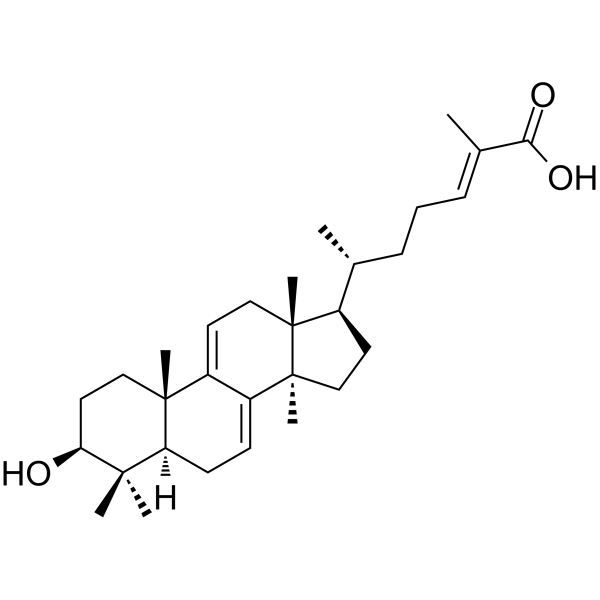Enzymes(酶)
Enzymes are very efficient and specific catalyst proteins which react with 1 or few types of substrates in biochemical reactions and are responsible for bringing about almost all of the chemical reactions in living organisms. Enzymes speed up reactions by providing an alternative reaction pathway of lower activation energy. Without enzymes, reactions take place at a rate far too slow for the pace of metabolism which means that they speed up the chemical reactions in living things.
There are 2 types of enzymes, ones that help join specific molecules together to form new molecules & others that help break specific molecules apart into separate molecules. Enzymes play many important roles ouside the cell as well. One of the best examples of this is the digestive system. For instance, it is enzymes in your digestive system that break food down in your digestive system break food down into small molecules that can be absorbed by the body. Some enzymes in your digestive system break down starch, some proteins and others break down fats. The enzymes used to digest our food are extra-cellular since they are located outside our cells & enzymes inside our cells are intra-cellular enzymes. Enzymes are used in ALL chemical reactions in living things; this includes respiration, photosynthesis, movement growth, getting rid of toxic chemicals in the liver and so on. Enzymes are proteins that must have the correct structure to be active. They are very easily affected by heat, pH and heavy metal ions.
Ribonucleoprotein enzyme catalytic activity is located in the protein part but for some the catalytic activity is in the RNA part. A catalyst is any substance which makes a chemical reaction go faster, without itself being changed. A catalyst can be used over and over again in a chemical reaction and does not get used up.
Enzymes lower the amount of activation energy needed by binding to the reactants of the reaction they catalyze, thus speed up the reaction and can process millions of molecules per second. Enzymes are typically large proteins with high molecular weight that permit reactions to go at conditions that the body can tolerate.
Enzyme nomenclature is based on what the enzyme reacts with & how it reacts along with the ending ase.
Enzymes must get over the activation energy hurdle.
Enzymes change how a reaction will proceed which reduces the activation energy and makes it faster. The more we increase the enzyme concentration the faster the reaction rate for non-catalyzed reactions. Enzymes that are catalyzed reactions also increase reaction rate at higher level of concentration but up to a certain point called Vmax which means that the enzyme has reached its maximum point. The reaction is limited by both the concentrations of the enzyme and substrate. Enzymes as catalysts take part in reactions which provide an alternative reaction pathway. Enzymes do not undergo permanent changes and remain unchanged at the end of the reaction. They only change the rate of reaction, not the position of the equilibrium.Enzymes as catalysts are highly selective by only catalysing specific reactions due to the shapes of the enzyme’s molecule.
Enzymes contain a globular protein part called apoenzyme and a non-protein part named cofactor or prosthetic group or metal-ion-activator. Changes in temperature and pH have great influence on the intra- and intermolecular bonds that hold the protein part in their secondary and tertiary structures.
Examples of cofactors are 1. Prosthetic group that are permanently bound to the enzyme. 2. Activator group which are cations (positively charged metal ions) & temporarily bind to the active site of the enzyme. 3.Coenzymes, usually vitamins or made from vitamins which are not permanently bound to the enzyme molecule, but combine with the enzyme-substrate complex temporarily. Enzymes require the presence cofactors before their catalytic activity can be exerted. This entire active complex is referred to as the holoenzyme.
Without enzymes, our guts would take weeks to digest our food, our muscles, nerves and bones would not work properly and so on…
Main Enzyme category groups:
Oxidoreductases:
All enzymes that catalyse oxido-reductions belong in this class. The substrate oxidized is regarded as a hydrogen or electron donor. The classification is based on 'donor:acceptor oxidoreductase'. The common name is 'dehydrogenase', wherever this is possible; as an alternative, 'acceptor reductase' can be used. 'Oxidase' is used only where O2 is an acceptor. Classification is difficult in some cases, because of the lack of specificity towards the acceptor.
Transferases:
Transferases are enzymes that transfer a group, for example, the methyl group or a glycosyl group, from one compound (generally regarded as donor) to another compound (generally regarded as acceptor). The classification is based on the scheme 'donor:acceptor grouptransferase'. The common names are normally formed as 'acceptor grouptransferase' or 'donor grouptransferase'. In many cases, the donor is a cofactor (coenzyme) that carries the group to be transferred. The aminotransferases constitute a special case.
Hydrolases:
These enzymes catalyse the hydrolysis of various bonds. Some of these enzymes pose problems because they have a very wide specificity, and it is not easy to decide if two preparations described by different authors are the same, or if they should be listed under different entries. While the systematic name always includes 'hydrolase', the common name is, in most cases, formed by the name of the substrate with the suffix -ase. It is understood that the name of the substrate with this suffix, and no other indicator, means a hydrolytic enzyme. It should be noted that peptidases have recommended names rather than common names.
Lyases:
Lyases are enzymes that cleave C-C, C-O, C-N and other bonds by means other than by hydrolysis or oxidation. They differ from other enzymes in that two (or more) substrates are involved in one reaction direction, but there is one compound fewer in the other direction. When acting on the single substrate, a molecule is eliminated and this generates either a new double bond or a new ring. The systematic name is formed according to 'substrate group-lyase'. In common names, expressions like decarboxylase, aldolase, etc. are used. 'Dehydratase' is used for those enzymes that eliminate water. In cases where the reverse reaction is the more important, or the only one to be demonstrated, 'synthase' may be used in the name.
Ligases:
Ligases are enzymes that catalyse the joining of two molecules with concomitant hydrolysis of the diphosphate bond in ATP or a similar triphosphate. 'Ligase' is often used for the common name, but, in a few cases, 'synthase' or 'carboxylase' is used. 'Synthetase' may be used in place of 'synthase' for enzymes in this class.
Products for Enzymes
- 41701(11)
- Activating Transcription Factor(3)
- Adenylate Kinase(10)
- AHCY(3)
- Aldolase(9)
- Asparaginase(5)
- Aurora Kinase(18)
- Beta Lactamase(3)
- Calcium and Integrin Binding(2)
- Calcium/Calmodulin-Dependent Protein Kinase(4)
- Carbonic Anhydrase(49)
- Casein Kinase(36)
- Cathepsin(52)
- Chitinase(5)
- Creatin Kinases(9)
- Cyclin(7)
- Cyclin-Dependent Kinase(18)
- Cyclophilin(23)
- Deaminase(14)
- Decarboxylase(12)
- Dehydrogenase(96)
- Discoidin Domain Receptor Tyrosine Kinase(2)
- DNA Polymerase(4)
- EGF Receptor(3)
- Endonuclease(6)
- Enolase(10)
- Enterokinase(5)
- Epimerase(3)
- Esterase(15)
- FGF Receptors(12)
- FK506 Binding Protein(10)
- Fructosamine 3 Kinase(2)
- Galactosidase(5)
- Glucosidase(32)
- Gluteradoxin(7)
- Glycogen synthase kinase(2)
- Glycosylase(10)
- Glyoxalase(3)
- Granzyme(7)
- Guanylate Kinase(2)
- Heparanase(2)
- Histone Deacetylase(3)
- Hydratase(10)
- Hydrolase(33)
- Hydroxylase(6)
- Isomerase(26)
- Jun N-terminal Kinase(1)
- Jun Proto-Oncogene(2)
- Kallikrein(26)
- Ligase(4)
- Lipase(14)
- Lipocalin(6)
- Lyase(9)
- LYVE1(3)
- Mitogen-Activated Protein Kinase(16)
- MMP(68)
- Mutase(11)
- Natural Enzymes(4)
- Nuclease(18)
- Nucleotidase(4)
- Nudix Type Motif(11)
- Other Enzymes(63)
- Oxidase(23)
- Oxygenase(12)
- Paraoxonase(3)
- Peptidase(41)
- Peroxiredoxin(10)
- Phosphatase(150)
- Phosphorylase(9)
- PI3-kinase(5)
- Polymerase(13)
- PPARG(2)
- Protease(15)
- Proteasome(54)
- Protein Kinase Akt1/PKB alpha(4)
- Protein Kinase-A(7)
- Protein Kinase-C(3)
- Protein Kinases(86)
- Protein Tyrosine Phosphatase(10)
- Reductase(60)
- Secreted Phospholipase A2(10)
- Serine Threonine Kinase(4)
- Sulfatase(8)
- Synthase(23)
- Synthetase(33)
- TGFBR(3)
- TGM2(3)
- TIMP(10)
- TPA(4)
- Transferase(156)
- Tyrosine Kinase(9)
- Ubiquitin Conjugating Enzyme(39)
- Uromodulin(4)
- VEGF Receptors(14)
- Transaminase(19)
- Hexokinase(6)
- TIE1(6)
- Cat.No. 产品名称 Information
-
GP21628
FKBP2 Human
FK506 Binding Protein 2 Human Recombinant

-
GP21629
FKBP3 Human
FK506 Binding Protein 3 Human Recombinant

-
GP21630
FKBP4 Human
FK506 Binding Protein 4 Human Recombinant

-
GP21631
FKBP5 Human
FK506 Binding Protein 5 Human Recombinant

-
GP21632
FKBP6 Human
FK506 Binding Protein 6 Human Recombinant

-
GP21633
FKBPL Human
FK506 Binding Protein Like Human Recombinant

-
GP22506
Flavokinase Human
Riboflavin Kinase Human Recombinant

-
GP22508
FLT1 D3 Human
Vascular Endothelial Growth Factor Receptor-1 D3 Human Recombinant

-
GP22509
FLT1 D3 Human, His
Vascular Endothelial Growth Factor Receptor-1 D3 Human Recombinant, His Tag

-
GP22510
FLT1 D4 Human
Vascular Endothelial Growth Factor Receptor-1 D4 Human Recombinant

-
GP22511
FLT1 D5 Human
Vascular Endothelial Growth Factor Receptor-1 D5 Human Recombinant

-
GP22512
FLT1 D7 Human
Vascular Endothelial Growth Factor Receptor-1 D1-7 Human Recombinant

-
GP22513
FLT1 D7 Mouse
Vascular Endothelial Growth Factor Receptor-1 D1-7 Mouse Recombinant

-
GP22507
FLT1 Human
Vascular Endothelial Growth Factor Receptor-1 Human Recombinant

-
GP22514
FLT1 Human, His
Vascular Endothelial Growth Factor receptor-1 Human Recombinant, His Tag

-
GP22516
FLT4 Fc Human
Vascular Endothelial Growth Factor Receptor-3 Fc Chimera Human Recombinant

-
GP22515
FLT4 Human
Vascular Endothelial Growth Factor Receptor-3 Human Recombinant

-
GC12992
Fluorometholone Acetate
氟米龙醋酸酯
A synthetic glucocorticoid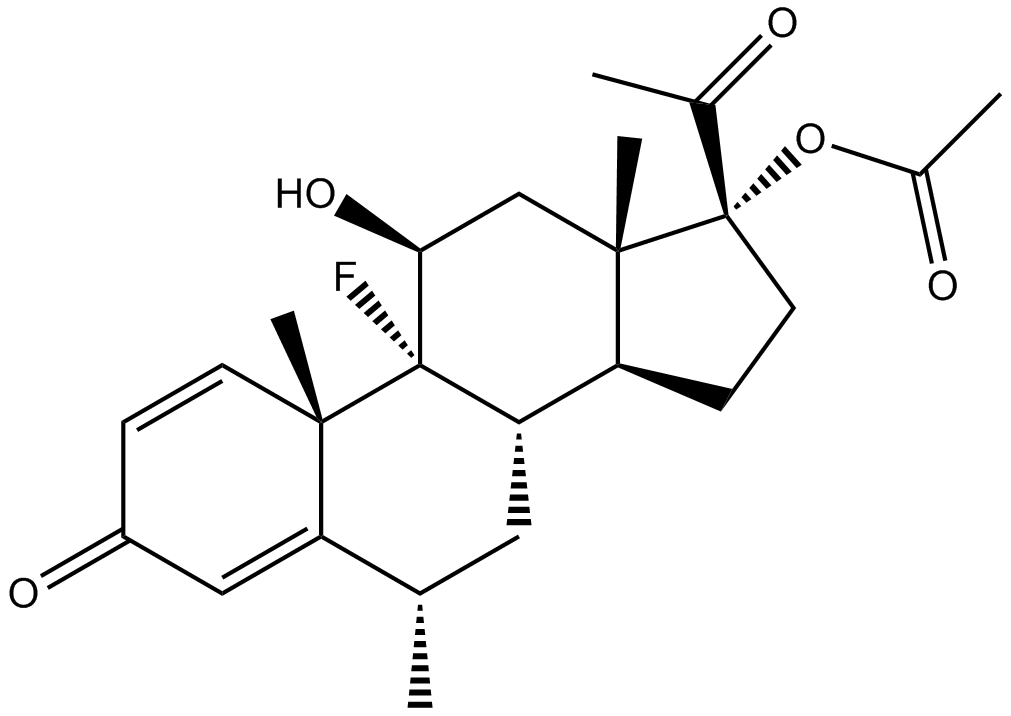
-
GC70201
FN-439 TFA
FN-439 TFA是一种选择性胶原酶-1抑制剂。
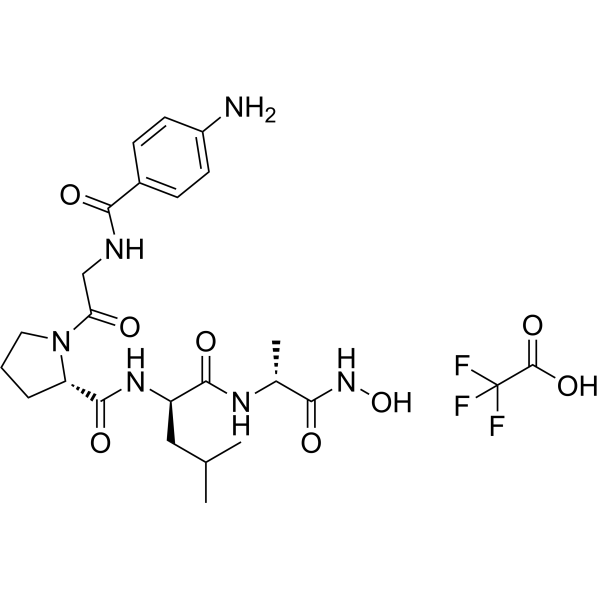
-
GP22517
FN3K Human
Fructosamine 3 Kinase Human Recombinant

-
GP22518
FN3KRP Human
Fructosamine 3 Kinase Related Protein Human Recombinant

-
GP26151
FOLH1 Human
FOLH1 produced in Sf9 Baculovirus cells is a single, glycosylated polypeptide chain containing 717 amino acids (44-750 a

-
GP21634
FOLH1 Mouse
Folate Hydrolase 1 Mouse Recombinant

-
GC64005
FPFT-2216
FPFT-2216 是一种"分子胶水"化合物,可降解磷酸二酯酶 6D (PDE6D)、锌指转录因子 Ikaros (IKZF1)、Aiolos (IKZF3) 和酪蛋白激酶 1α (CK1α)。FPFT-2216 可用于癌症和炎症疾病的研究。
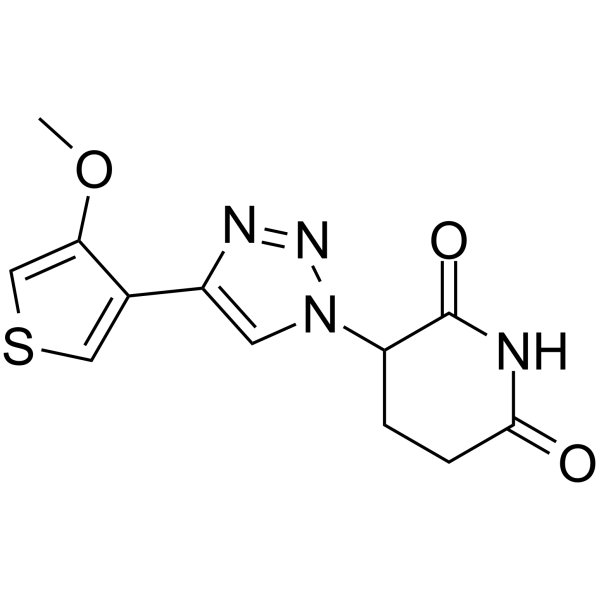
-
GC60860
FSL-1 TFA
FSL-1, a bacterial-derived toll-like receptor 2/6 (TLR2/6) agonist, enhances resistance to experimental HSV-2 infection.

-
GP21635
FTCD Human
Formiminotransferase Cyclodeaminase Human Recombinant

-
GP26189
FTL1 Human, HEK
FTL1 Human Recombinant is a single, glycosylated polypeptide chain containing 675 amino acids (27-687a

-
GP21636
FUCA1 Human
Fucosidase Alpha-L- 1 Plasma Human Recombinant

-
GP21637
FUCA2 Human
Fucosidase Alpha-L- 2 Plasma Human Recombinant

-
GP21638
Fumarase Human
Fumarate Hydratase Human Recombinant

-
GC47385
Furosemide-d5
呋塞米 D5
An internal standard for the quantification of furosemide
-
GP21639
FUT3 Human
Fucosyltransferase 3 Human Recombinant

-
GP21640
FUT7 Human
Fucosyltransferase 7 Human Recombinant

-
GC68008
GÜ2602
GÜ2602 是一种有效的、可逆的组织蛋白酶 K (cathepsin K (CatK)) 抑制剂,对 成熟 CatK (mCatK) 的 Ki 值为 0.013 nM。GÜ2602 抑制组织蛋白酶 K 酶原的自催化激活。
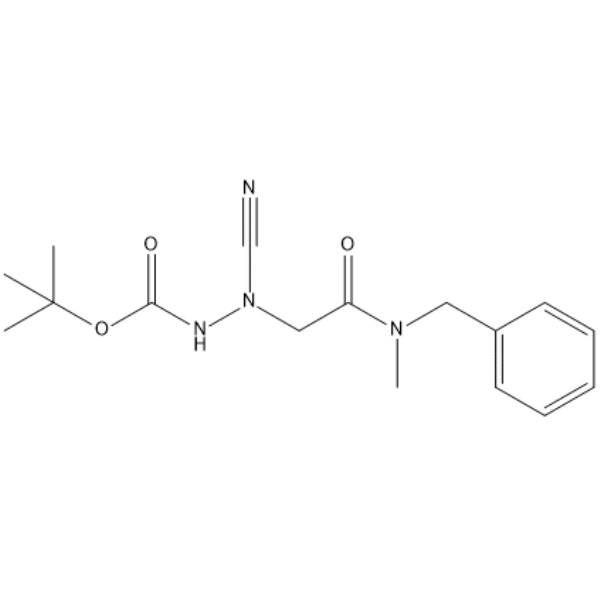
-
GP21645
G3BP1 Human
GTPase Activating Protein (SH3 domain) Binding Protein 1 Human Recombinant

-
GP21646
G3BP2 Human
GTPase Activating Protein (SH3 domain) Binding Protein 2 Human Recombinant

-
GP21647
G6PD E.Coli
Glucose-6-Phosphate Dehydrogenase E.coli Recombinant

-
GP21648
G6PD Human
Glucose-6-Phosphate Dehydrogenase Human Recombinant

-
GP21649
GAD1 Human
Glutamate Decarboxylase 1 Human Recombinant

-
GP21650
GAD1 iso1 Human
Glutamate Decarboxylase 1 Isoform-1 Human Recombinant

-
GP21651
GAD2 Human
Glutamate Decarboxylase 2 Human Recombinant

-
GP21652
GAD2 Human, Biotin
Glutamate Decarboxylase 2 Human Recombinant, Biotinylated

-
GP21653
GALE Human
UDP-Galactose-4-Epimerase Human Recombinant

-
GP22519
GALK1 Human
Galactokinase 1 Human Recombinant

-
GP21654
GALM Human
Galactose Mutarotase Human Recombinant

-
GP21641
GALNT1 Human
Polypeptide N-Acetylgalactosaminyltransferase 1 Human Recombinant

-
GP21642
GALNT1 Mouse
Polypeptide N-Acetylgalactosaminyltransferase 1 Mouse Recombinant

-
GP21655
GALT Human
Galactose-1-Phosphate Uridylyltransferase Human Recombinant

-
GP21656
GAMT Human
Guanidinoacetate N-Methyltransferase Human Recombinant

-
GC62984
Ganoderic acid Y
灵芝酸Y
Ganoderic acid Y 是一种 α-葡萄糖苷酶 (α-glucosidase) 抑制剂,对酵母 α-葡萄糖苷酶的 IC50 为170 μM。Ganoderic acid Y 通过阻止肠道病毒 71 (EV71) 的脱膜而抑制其复制。